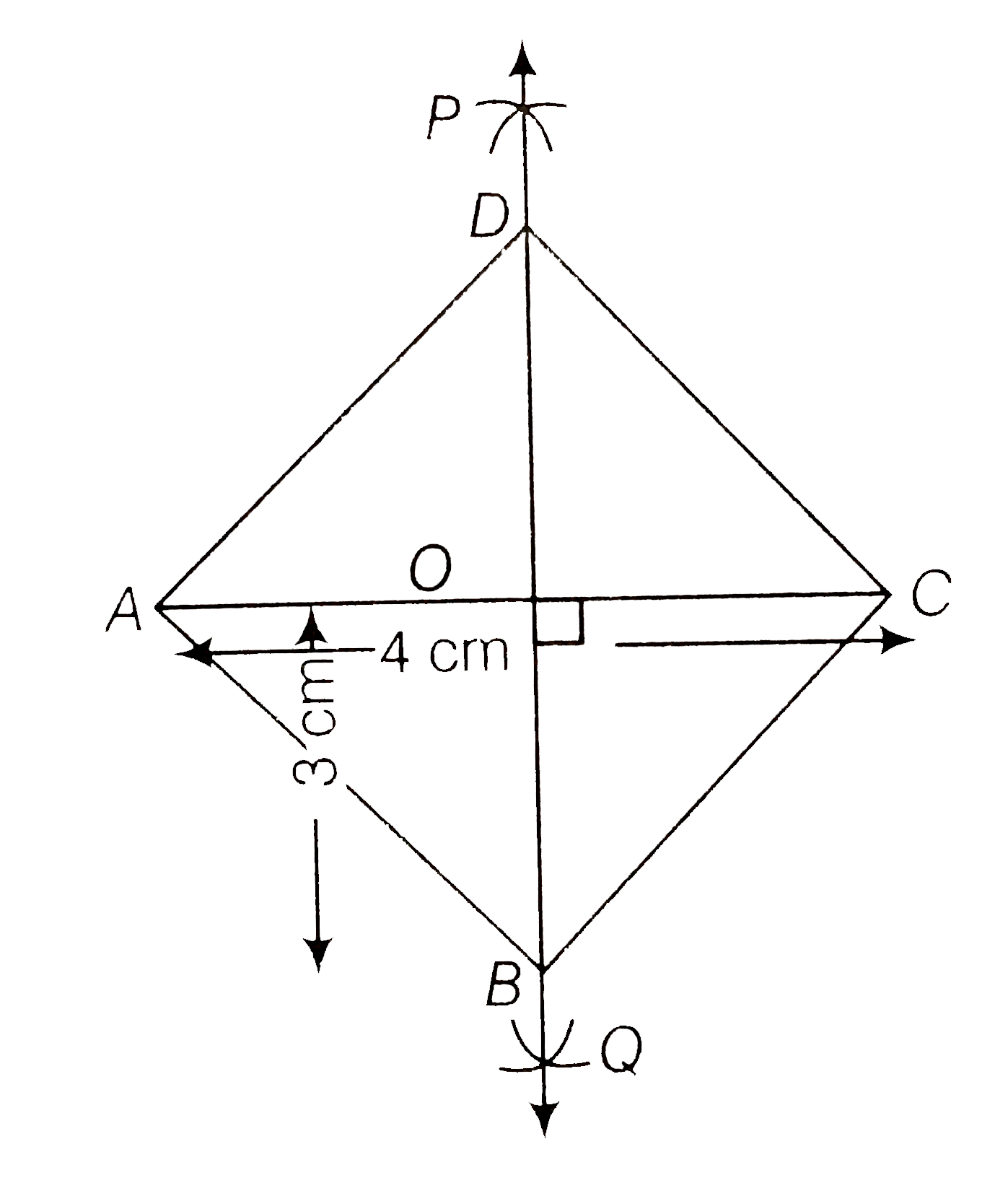InterviewSolution
Saved Bookmarks
| 1. |
A rhombus whose diagonals are 4cm and 6cm in lengths. |
|
Answer» Solution :We know that , all SIDES of a rhombus are equal and the diagonals of a rhombus are equal and the diagonals of a rhombus are perpendicular bisectors of one another. So, to construct a rhombus whose diagonals are `4cm` and `6cm` USE the following stegs. (i) Draw the diagonal SAY `AC = 4cm` (ii) Taking `A` and `C` as centres and radius more than `(1)/(2)AC` draw arcs on both sides of the line segment AC to intersect each other. (iii)Cut both arcs intersect each other. (iv) Let PQ intersect AC at the point O. Thus , PQ is perpendicular bisector of AC. (v) Cut off `3cm` lengths from `OP` and OQ, then we get points B and D. (vi) Now , join `AB, BC, CD`, and `DA`. Thus, `ABCD` is the required rhombus. Justification Since, D and B lie on perpendicular bisector of AC. DA = DC and BA = BC....(i) [since, every point on perpendicular of line segment is equidistant from end points of line segment] Now,`angleDOC = 90^(@)` Also,OD = OB = 3cm Thus , AC is perpendicular bisector or BD. CD = CB....(ii) From Eqs. (i) and (ii), AB = BC = CD = DA Hence , ABCD is a rhombus. 
|
|